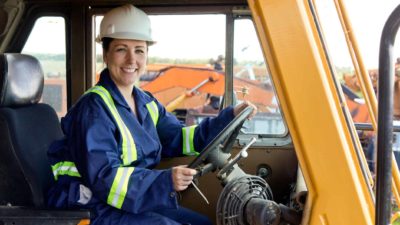The Lake Resources NL (ASX: LKE) share price has tumbled 80% over the past 12 months.
The ASX lithium share is currently trading at 46 cents, which is a 78.7% decline over the year.
By comparison, the S&P/ASX All Ordinaries Index (ASX: XAO) is down 4.5% over the year.
But things could be turning around following Lake Resources' announcement that its environmentally-friendly direct lithium extraction (DLE) technology process "has now been proven" to work.
This at least partly debunks one of the claims made by a United States short seller in July last year.
Lake Resources share price stabilises in April
On 3 April, Lake Resources told the market about a potentially game-changing development in its evolution from a lithium explorer to a clean lithium producer.
Since that day, the Lake Resources share price appears to be stabilised. It is currently trading at 45 cents, which is the same level it closed at on Friday, 31 March, ahead of the Monday announcement.
Could this be the beginning of the end of this ASX lithium share's depressing 12-month decline?
A painful year for investors
It's been a rough road for Lake Resources shareholders since the company's troubles began in April 2022.
Let's do a quick recap.
On 5 April 2022, the Lake Resources share price hit an all-time high of $2.65. For investors who bought in at 7 cents in early 2021 when global lithium prices began their massive upswing, this was an incredible 3,685% capital gain. Yee-hah!
Then began the fall.
On 20 June 2022, Lake Resources announced the shock resignation of its CEO Steve Promnitz, in a seemingly acrimonious split. Promnitz sold his 10.2 million shares the next day.
There was also commentary swirling about overly optimistic demand projections for lithium.
These two factors, along with the 150% gain in the Lake Resources share price between February and April, led to it making its debut as one of the top 10 most shorted ASX shares on the market in July.
The short interest at the time was 8.9%.
Then came another enormous hit. US short seller J Capital published a report with a series of claims against Lake Resources.
What did the short seller claim?
J Capital listed a number of concerns, one of them pertaining to the DLE technology provided by Lake Resources' technology partner, Lilac Solutions.
A bit of background here.
Lake Resources has long sought to separate itself from other lithium producers by marketing itself as a "clean lithium developer" due to its use of DLE technology to produce greener lithium.
Lake Resources says the ion exchange extraction technology will deliver high-purity battery materials (desirable for enhanced performance) and lithium carbonate with a lower carbon footprint.
In short, it reckons its lithium is cleaner and greener than any other producers' lithium, thereby potentially making Lake Resources more appealing to ESG-focused customers and investors.
But J Capital analysts weren't convinced the technology would work as planned, commenting:
Lake is one of several lithium explorers planning to use an unproven direct lithium extraction (DLE) technology to remove lithium from brine.[…]
We believe, however, DLE will still use large amounts of water and produce toxic waste.
Lake has failed to get an operational pilot plant on site three years after promising it would. Investors still have no evidence that the Lilac DLE technology works at scale and if so at what cost.
Lake Resources went into a trading halt and then responded, saying the report "puts forth incorrect information on technical matters and inaccurate assertions on Lake Resources' progress to date".
The Lake Resources share price recovered slightly over the next month to reach $1.595 on 11 August.
But then it lost momentum, and a long downward spiral ensued.
Good news at last for the ASX lithium share
On 3 April, Lake Resources announced independent verification of above 99.8% grades and purity for lithium carbonate that was converted from 40,000 litres of lithium chloride produced at its flagship Kachi Project in Argentina using the DLE technology.
Lake Resources CEO David Dickson said the results proved the DLE process worked.
This is a new process that has now been proven to produce high grade lithium in our 'mining and
refining' facility – this means a critical part of the value adding chain is being captured by Lake.It also sets a new standard for what it means to be a responsible member of the lithium supply chain.
In its statement, the company said Project Kachi was "poised to lead the industry in the production of high-quality lithium with minimal environmental footprint".
Lake Resources elaborated:
This test, performed by Saltworks with independent analysis by two third party labs, validates the
major commercial process systems for the Kachi Project and confirms its ability to produce high-quality, battery-grade lithium carbonate from Lake's brine resource using Lilac DLE technology.The quality of the Li2CO3 product from the Saltworks test exceeds the Project Design Specification and
the battery grade specifications of major South American brine lithium producers.
Kachi 'on track' for commercial-scale development
On Monday, Lake Resources announced another "major milestone" for Kachi with first production of 2,500kg of lithium carbonate equivalents (LCE).
The company said it was a "historic advancement in lithium production technology".
The company said:
The project is now on track to move from its pilot phase into commercial-scale development, which will make it the first lithium brine project in South America to produce lithium at commercial scale without the use of evaporation ponds for lithium concentration.
This is the first successful implementation of ion exchange for lithium production in South America, home to most of the world's lithium brine resources.
The 2,500 kg of LCEs was extracted at Kachi with … 1,000x less land compared with evaporation ponds, and 10x less water compared with conventional aluminum-based absorbents.
In a joint statement from Lilac and Lake Resources, the two company CEOs commented:
Today, we've proven that it is possible to produce high-purity lithium faster and without evaporation ponds – all while protecting surrounding communities and ecosystems.
Is Lake Resources a buy at today's share price?
As we covered last month, Bell Potter thinks the Lake Resources share price could grow five-fold in the next year. At the time, the broker had a speculative buy rating with a price target of $2.52.
Short positioning on the ASX lithium share has dropped by 30% over the past six months. According to the latest ASIC data, 6.83% of Lake Resources shares are shorted compared to 10.13% six months ago.








